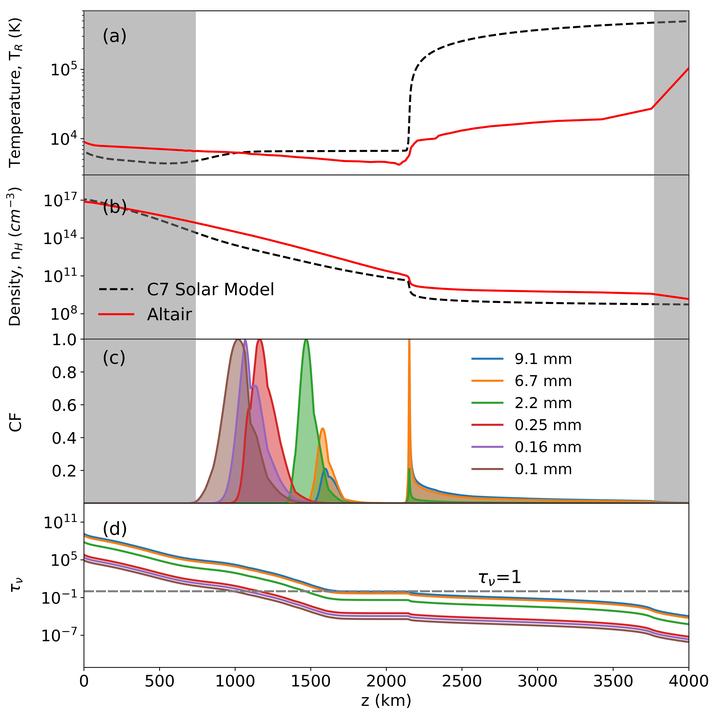 White et al. 2021
White et al. 2021Abstract
The radio spectra of main-sequence stars remain largely unconstrained due to the lack of observational data to inform stellar atmosphere models. As such, the dominant emission mechanisms at long wavelengths, how they vary with spectral type, and how much they contribute to the expected brightness at a given radio wavelength are still relatively unknown for most spectral types. We present radio continuum observations of Altair, a rapidly rotating A-type star. We observed Altair with NOEMA in 2018 and 2019 at 1.34, 2.09, and 3.22 mm and with the Very Large Array in 2019 at 6.7 and 9.1 mm. In the radio spectra, we see a brightness temperature minimum at millimeter wavelengths followed by a steep rise to temperatures larger than the optical photosphere, behavior that is unexpected for A-type stars. We use these data to produce the first submillimeter to centimeter spectrum of a rapidly rotating A-type star informed by observations. We generated both PHOENIX and KINICH-PAKAL model atmospheres and determine the KINICH-PAKAL model better reproduces Altair’s radio spectrum. The synthetic spectrum shows a millimeter brightness temperature minimum followed by significant emission over that of the photosphere at centimeter wavelengths. Together, these data and models show how the radio spectrum of an A-type star can reveal the presence of a chromosphere, likely induced by rapid rotation, and that a Rayleigh Jean’s extrapolation of the stellar photosphere is not an adequate representation of a star’s radio spectrum.